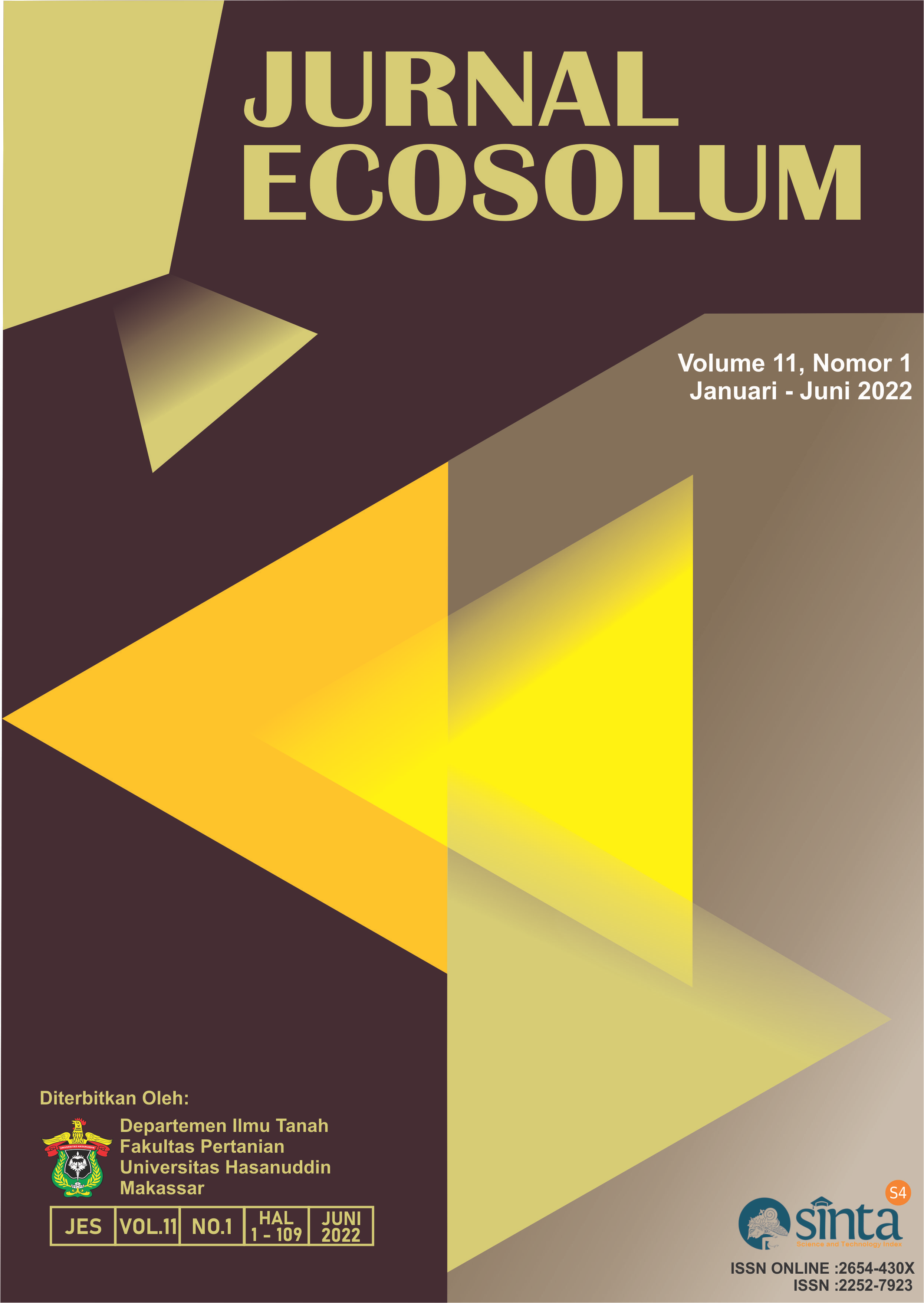EFEK RESIDU APLIKASI BIOCHAR PADA MUSIM TANAM PERTAMA DAN POC NASA UNTUK PENINGKATAN PERTUMBUHAN DAN PRODUKSI TANAMAN KACANG TANAH (Arachis hypogaea L)
Residual Effects of Biochar Aplication in First and POC NASA Applications for Increasing the Growth and Production of Peanut (Arachis hypogaea L.)
DOI:
https://doi.org/10.20956/ecosolum.v11i1.18956Keywords:
Biochar residue, POC NASA, PeanutAbstract
The purpose of this study was to determine the interaction and main effects of biochar residue and POC NASA applications to increase growth and production and nutrient uptake of peanut plants. This research has been carried out at the Experimental Garden of the Faculty of Agriculture, Riau Islamic University, Pekanbaru City. The research was carried out for 4 months from January to April 2021. The design used in this study was a factorial completely randomized design (CRD) consisting of 2 factors, the first factor was biochar residue (B) which consisted of 4 treatment levels, namely biochar dose 0; 0,7; 1.4; 2,1 kg per plot. The second factor is POC NASA which consists of 4 treatment levels, namely POC NASA concentration 0; 3; 6; 9 ml/L of water. Parameters observed were relative growth rate, number of pods, the weight of wet pods per plant, the weight of dry pods per plant, and nutrient uptake of N, P, K in plants. Observational data from each treatment were statistically analyzed and continued with the further test of Honest Significant Difference (BNJ) at the 5% level. The results showed that the residue biochar and POC NASA had a significant effect on all observed parameters except for plant nutrient uptake parameters of N, P, and K. In terms of interaction and main, the best treatment was biochar residue, the dose of 2,1 kg/plot and POC NASA with a concentration of 9 ml/liter of water (B3P3).
Downloads
Published
How to Cite
Issue
Section
License

This work is licensed under a Creative Commons Attribution-NonCommercial 4.0 International License.












